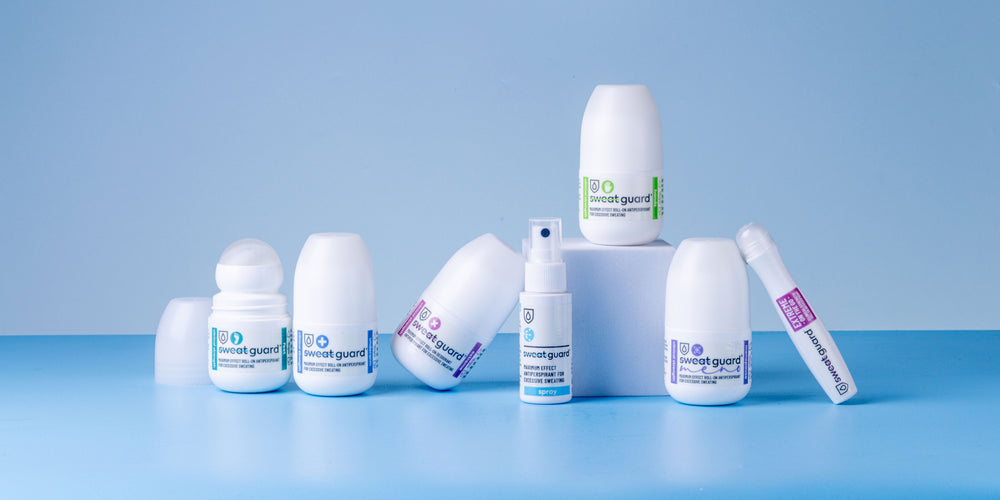Understanding Menopausal Sweating: Why It Happens and How to Manage It
Menopause is a natural and inevitable stage of life, yet the changes it brings can sometimes feel overwhelming. Among the most challenging symptoms are hot flushes and night sweats. While these are completely normal responses to hormonal shifts, the impact of these shifts often include disturbing sleep, reducing comfort, and affecting daily confidence.
What Causes Sweating During Menopause?
The main trigger is the decline in oestrogen, which affects the hypothalamus (the part of the brain responsible for regulating body temperature). During menopause, it can become hypersensitive, interpreting even small changes as overheating. This sparks a cooling response: blood vessels dilate (causing flushing) and sweat glands activate.
This process is natural but often sudden and unpredictable, leading to:
-
Hot flushes – sudden waves of heat, especially over the face, neck, and chest
-
Night sweats – excessive sweating during sleep, often leaving clothing and bedding damp
-
General excessive sweating – affecting areas like the underarms, face, or scalp
How Common is Menopausal Sweating?

-
Around 75–80% of menopausal women report experiencing hot flushes or night sweats. NHS In Form
-
For many, these symptoms last between 4 and 10 years, although they vary in intensity over time, as per research published on the National Library of Medicine’s website
-
Sweating can be intense during perimenopause, the transitional phase before menstruation stops entirely.
The Emotional and Social Impact
Beyond physical discomfort, menopausal sweating often has emotional implications. Many women feel embarrassed in social settings or lose confidence in professional environments because of visible sweating or body odour. Sleep disruption from night sweats can also lead to fatigue, irritability, and mood disturbances.
Unfortunately, many women are reluctant to seek help, assuming it's something they just have to "put up with" but effective management strategies are available, and support is growing. NHS Inform – Menopause Symptoms.
Managing Menopausal Sweating: What Works?

Clinical Antiperspirants
-
-
Aluminium chloride-based antiperspirants are the first-line treatments for managing excessive underarm sweating. However, as NHS Inform acknowledges, they often cause itching, tingling and general irritation of the skin. That’s why we created Sweat Guard® clinical strength antiperspirants that are powerful enough to control sweating, yet gentle enough for regular use.
-
Lifestyle Adjustments
- Choose clothing that's breathable and made from natural fabrics
- Reduce known triggers like alcohol, caffeine, and spicy food
- Use absorbent sweat pads for peace of mind—try our Sweat Guard® triple absorbent sweat pads for all-day protection
Keeping Cool
- Keep your environment cool and sleep with a window open for a fresh, cool breeze.
- Use a cooling mist or damp cloth during hot flushes to calm the skin.
-
Try a hand-held portable fan.
Medical Support
Hormone replacement therapy (HRT) is highly effective for many menopausal symptoms, including hot flushes and night sweats. Have a chat to your GP; they may be more helpful than you think.
Sweat Guard® Supports Menopausal Women – Save 15%
Our Menopause Bundles, all featuring our Meno Antiperspirant and various combinations of our natural soaps, and absorbent sweat pads, all designed to support you during this transitional phase. They’re available at 15% off.
🛒 Explore these bundle and learn more
Menopausal sweating is both common and manageable. With the right combination of knowledge, self-care, and expert-backed products, you can regain control of your comfort and confidence. Speak to your GP about your symptoms. Our support team is available to help you if you have questions regarding our menopause range.




